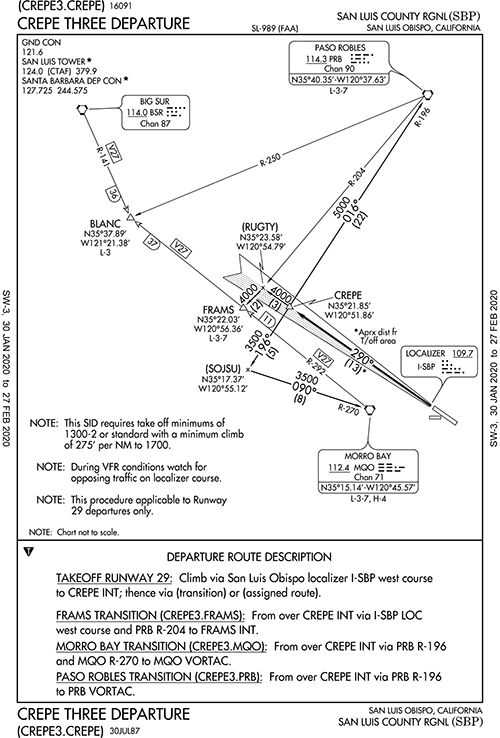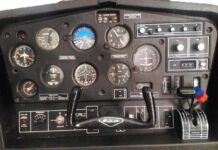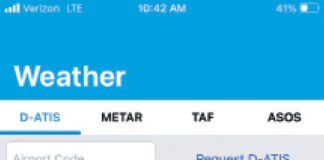Who Cancels Flight Following?
When receiving VFR flight following who has the authority to cancel? I haven’t found any clear guidance for situations where ATC, providing a “voluntary, as time available” service, can instruct an aircraft remain on a transponder code and frequency when the pilot wants to cancel due to frequency congestion or terrain issues.
Who has the authority to cancel?
Ian Marks
Big Bear, CA
Based solely from experience, I can say that it is the pilot’s responsibility to cancel flight following. But, ATC can also cancel your flight following without input from you. I was on a VFR cross country and Center advised us we’d be falling out of radar coverage. However, they didn’t cancel us. We “assumed” we’d been canceled and we landed for fuel. After we got fuel and were preparing to leave, someone came out of the FBO saying we had a phone call from ATC. We got scolded for not cancelling, then landing without them knowing or expecting.
Of course, there are other times when ATC will just tell you, “Radar service cancelled. Squawk 1200. Frequency change approved.” This might be due to workload, pilot errors, reaching a destination, falling below radar coverage, etc.
So, unless ATC cancels you, it’s your responsibility to cancel, otherwise they might come looking for you. Now, there’s another situation where you might say you want to cancel, and indeed did cancel, but the controller saw traffic or other issues ahead that could be a factor and told you to stay with him for a bit longer so he could make sure you remained safe. That’s common. However, if you really wanted to cancel, I suspect you could merely repeat your cancellation adding a bit more insistence, like, “Thanks anyway, but I really need to cancel now to…” I suspect you’d get a warning about traffic and then radar termination. —FB
Laughed Out Loud
Paul Berge’s January 2020 “Stupid Pilot Tricks” was one of the funniest, if not the funniest, bits I’ve ever read, aviation-related or otherwise. I ride the train to and from work, and my repeated belly laughs caused quite a disruption one evening to the normally quiet atmosphere of my trek home. Keep ’em coming … and here’s hoping I never win one of Paul’s awards.
Jim Pollock
Fredericksburg, VA
Paul Berge, as an editor of IFR Magazine many years ago, with his irreverentyet- penetrating style, set the tone for the magazine, the tone that has become our hallmark and one we strive to maintain. Actually, though, the “Stupid Pilot Tricks” article was originally written by Jane Garvey (no relation to the past FAA Administrator) quite some time ago. When she retired, we asked Paul to step
in and he’s kept us laughing ever since. I now appears that Paul might be cutting back, but rest assured it’s a popular piece that we’ll endeavor to keep alive. By the way, Paul Berge has published a few novels and his books are equally as irreverent and amusing as what he’s written for us. See PaulBerge.com.
Thanks for your comments and for reading IFR, Jim.
ATC Has Bad Data, Too
Further to your “Check Your Data” article (in January), it works both ways. I have several times been read clearances by Clearance Delivery with discontinuous routings via airways (e.g., VORs decommissioned along the way, non-existent Victor airways, etc., that are usually a Center or two distant).
There isn’t, apparently, any consistent continuity checking of routes that show up between city pairs for low-altitude pistons when NY Center’s “Pit” sends the clearances to our tower. Someone at Center looks at a sheet (real or virtual), sees a route that was designed some years ago but never revisited, and plugs it into the system for the flight at hand.
I’ve turned down the discontinuous routes, and it’s taken upwards of 20 minutes or more on the ground to get it straightened out. If only New York Center would issue iPads with an EFB with current databases to their traffic guys so they could check routes before they go out the door.
I’ve found that the practical answer is simply to accept the bogus clearance and impose on the next facility to the west (often Wilkes Barre) who graciously puts things right, usually with a “cleared direct destination.” Am I betting on the outcome? Yes. Is it the right, “by the book” thing to do? No. But on days when weather isn’t an issue it works better than sitting with the engine running waiting for ATC to get their poop in a group.
Last word: Tim Vasquez rocks. I look forward to his article in each issue.
Scott Dyer
Pleasantville, NY
Departing on the Front Course
I’ve researched your older articles on localizers, back courses, and the use of an HSI. Would it be true to say that any localizer flown in the opposite direction from the front course could be considered a back course?
Specifically, I’m reviewing the proper setup to both hand fly and use the autopilot on the San Louis Obispo CREPE3 departure.
Ken Allen
Phoenix, AZ

First, Ken, your broad statement, while on the right track, is a bit too broad. The localizer signal’s front course is the side of the antenna where the shaded side of the depicted arrow is on the right with the wide end at your back and the pointy end ahead. The back course, then, is that signal beyond the antenna. It doesn’t matter which way you’re actually going.
Recall the rules from the articles: If you’re inbound (toward the pointy end) on the front course, or outbound on the back course, you correct toward the needle. If you’re outbound on the front course (toward the wide end) or inbound on the back course, you correct away from the needle.
This departure uses the localizer’s front course (shading on the right). Since you’re flying outbound, you would correct away from the needle.
But, as noted in the articles, with an HSI you always put the inbound course for the front course under the course selector. This way, if you should correct away from the needle, the visually inverted nature of that needle still allows you to correct toward the needle.
But, the autopilot doesn’t know about this “visual inversion” so to tell it to correct away from the needle, you’d use the BC mode.





